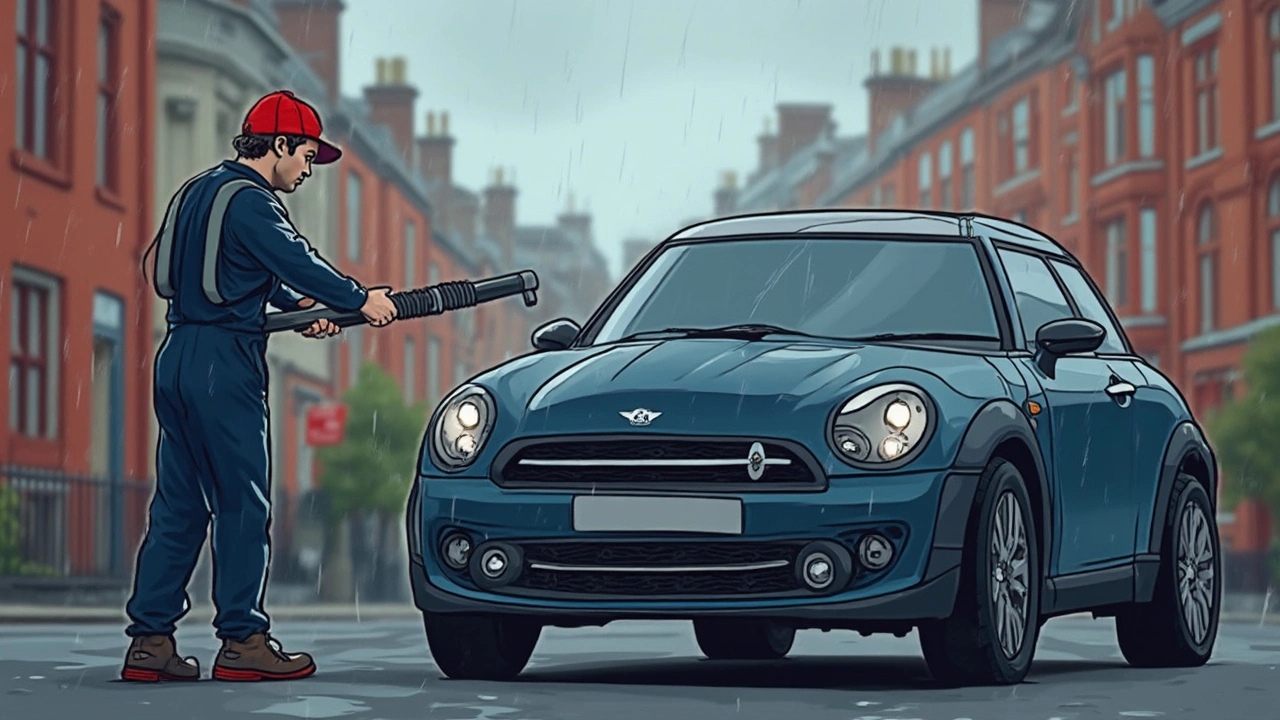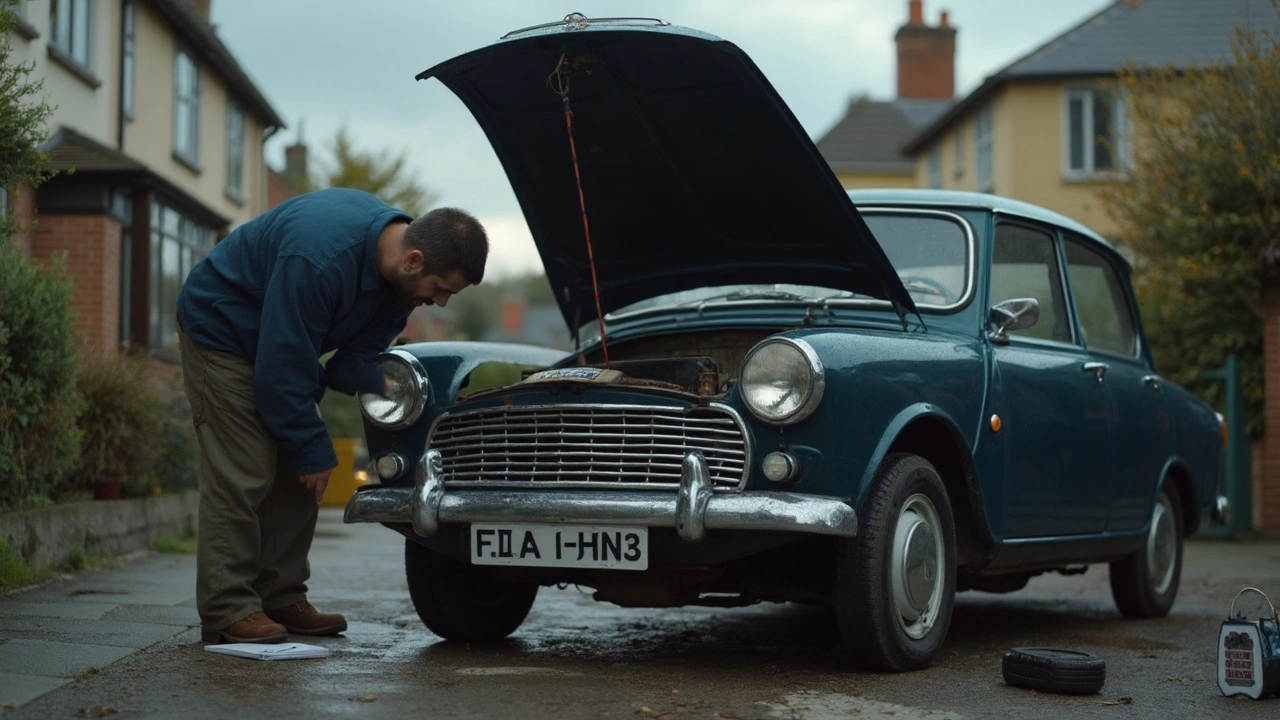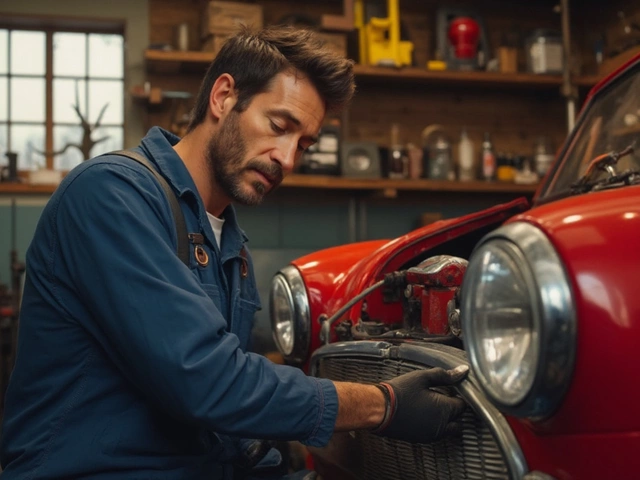Ever hit a pothole and then your car starts pulling to one side? Or maybe you hear an odd clunk every time you turn? These can be red flags that your front suspension isn't working right. It’s not just about annoying noises—bad suspension can mess with how your car handles, eats up your tires, and makes every bump feel like a crater.
You don’t need a mechanic’s toolbox to catch the early signs. Little things like uneven tire wear, loose steering, or a bounce that doesn’t quit can give away bigger problems. Ignoring the hints can mean more than just a rough ride; it could even mean the difference between stopping on time and not stopping at all.
- Classic Symptoms of a Bad Front Suspension
- Noises and Feelings You Shouldn’t Ignore
- DIY Tests Anyone Can Try at Home
- What to Do Next (and When to Call the Experts)
Classic Symptoms of a Bad Front Suspension
Most people don’t think about their suspension until something’s off. But your front suspension keeps your ride steady, your steering sharp, and your tires in good shape. When it starts failing, it usually sends plenty of warning signs. Spotting these can save you a lot of money—and headaches—down the road.
Here are the most common things that show up when your front suspension starts going bad:
- front suspension clunks or knocks over bumps
- Unusual swaying or rolling when you turn
- Car nose-dives or dips hard when you brake
- Steering feels loose, stiff, or you fight with the wheel to stay straight
- Uneven tire wear—one side more roasted than the other
- Bouncing doesn’t stop quickly after you hit a bump
- Visible oil leaking from shocks or struts
Here's a quick look at how often these symptoms show up in cars with bad front suspension, according to data from real-world repair shops:
| Symptom | % of Reported Cases |
|---|---|
| Clunking/Knocking Sounds | 68% |
| Uneven Tire Wear | 53% |
| Loose or Wandering Steering | 46% |
| Car Pulls to One Side | 39% |
| Bouncy Ride After a Bump | 33% |
| Visible Leaks | 21% |
Noticed two or more of these? Don’t wait. These symptoms only get worse with time. What starts as a small issue today can turn into a real safety problem tomorrow.
Noises and Feelings You Shouldn’t Ignore
It’s crazy how much your car can tell you when the front suspension’s acting up—if you know what to listen and feel for. Weird clunks, groans, or rattling are more than just background noise. About 70% of front suspension issues start making noise when you go over bumps or turn sharply, and these are warnings you definitely don't want to brush off.
Here’s a cheat sheet for what your ears and hands should pick up on:
- Clunking or knocking when hitting bumps: Usually means worn ball joints or bushings. That’s not good—these parts keep your wheel in line with the road.
- Creaking or groaning while turning: Could be a dry or broken suspension joint. It shouldn’t sound like your grandma’s rocking chair.
- Rattling over rough roads: Loose or damaged sway bar links often cause this. Think of sway bars like the bouncer at a club—they stop things from getting too wild.
- Unresponsive or loose steering: If your steering wheel feels disconnected or floaty, it often points to a front suspension issue. Imagine driving and getting zero feedback about what the wheels are doing. Not safe.
- Excessive bouncing after bumps: Shocks or struts may be done for. If the car keeps bobbing up and down, it’s not hugging the road like it’s supposed to.
Want some real numbers? Check out how many drivers noticed these symptoms before a suspension repair, based on a 2023 consumer report:
| Symptom | % Noted Before Repair |
|---|---|
| Clunking/Knocking | 61% |
| Loose/Unstable Steering | 49% |
| Excessive Bouncing | 37% |
| Creaking Noises | 32% |
If you notice more than one of these, your front suspension isn't just trying to get your attention—it’s basically screaming for help. Trust your senses; they're your best early-warning system before things get worse (and more expensive).

DIY Tests Anyone Can Try at Home
You don’t need to be an expert to spot trouble with your front suspension. Grab a flashlight, use your senses, and you can get a pretty good idea before you head to the shop. No fancy gear required—just some patience and a little curiosity.
Here are some quick ways to check your front suspension in your own driveway:
- Bounce Test: Stand in front of your car and press down hard on the hood, then let go. If the car bounces more than twice before settling, your shocks or struts might be worn out.
- Visual Inspection: Turn your front wheels all the way to one side. Look at the suspension parts—like the coil springs, struts, and control arms. Rust, dents, or any leaking fluid are bad news.
- Tire Wear: Check your front tires for uneven wear patterns. Cupping or bald spots mean your suspension isn't holding things steady. There’s a reason technicians check tires first—uneven wear shows up fast.
- Listen for Noises: Take your car for a slow drive on a rough patch of road. If you hear clunks, squeaks, or rattles every time you hit a bump or turn the wheel, don’t ignore it. That’s classic suspension trouble.
- Steering Feel: Pay attention to how the wheel feels as you steer. If it feels loose, wanders, or you notice shaking—put that on your checklist. That could be the front suspension not holding things steady.
Want some numbers to back up why it matters? Check out this quick data snapshot:
| Issue | Effect on Safety/Performance |
|---|---|
| Worn Shocks/Struts | Can increase braking distance by 20% or more |
| Uneven Tire Wear | Reduces grip, bumps up hydroplaning risk |
| Loose Steering | Makes emergency handling less predictable |
These simple checks take less than 20 minutes but the peace of mind is worth it. Plus, catching problems early can save you a ton of money compared to replacing tires or fixing wrecked suspension down the road.
What to Do Next (and When to Call the Experts)
If you’ve picked up on weird sounds, uneven tire wear, or that bouncy front end, it’s time to think about your next move. Checking your front suspension isn’t just about peace of mind—it’s about keeping your car safe.
First, if you notice a shocking amount of play in your steering or you have trouble controlling the vehicle, don’t risk it. You shouldn’t drive until things get checked out by someone who knows their stuff.
- If you’ve just started noticing mild symptoms—like a strange creak or a hint of vibration—mark down when it happens. That info actually helps the shop track down the problem faster.
- If you spot a real issue, like the car leaning to one side or pooling liquid under the car, set up a mechanic visit ASAP. Leaking fluid could mean blown shocks or struts, and driving on those isn’t just uncomfortable—it can be dangerous.
Not sure how urgent it is? If you’re hearing loud clunks or scraping noises, or the car bounces more than once after hitting a bump, don’t wait around. These are signs the parts might fail completely, and that’s when things get sketchy on the road.
If you replace just one worn out part, ask your mechanic if related parts should be swapped too. Things like ball joints, tie rods, and control arm bushings often wear out together. A good shop will check the whole system, not just the one obvious problem.
Here’s a tip: always ask for your old parts back. Seeing what was broken can help you understand what happened, and can keep you from being overcharged for parts you didn’t need.
Bottom line—catching issues early makes repairs cheaper and driving safer. When anything feels off and you’re not sure how to fix it, let a pro take a look before things get worse.




